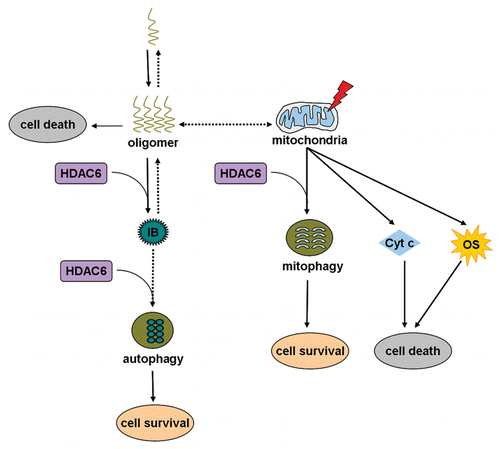Figures & data
Figure 1 A model of how HDAC6 functions in different pathways to cope with different cellular stresses. Oligomers derived from self-assembly of aggregation-prone proteins are a major cause of several neurodegenerative diseases. An immediate strategy for HDAC6 to cope with the toxic oligomers is to bind to and promote them to form inclusions. The ultimate strategy for HDAC6 to eliminate these nonfunctional protein aggregates is to facilitate autophagic degradation of these aggregated inclusions. Another strategy for HDAC6, when the neurons are challenged by mitochondrial dysfunction, is to promote mitophagy. Mitochondrial dysfunction may lead to oxidative stress and cytochrome c release, which are toxic to the cells. IB, inclusion body; Cyt c, cytochrome c; OS, oxidative stress.
